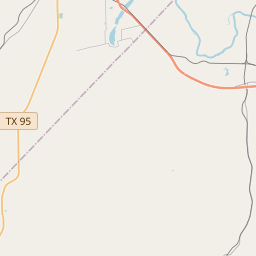Woods Prairie Cemetery
Historical marker location:






Woods Prairie Cemetery
Zadock Woods (d. 1842), veteran of the War of 1812 and one of Stephen F. Austin's Old Three Hundred colonists, brought his family to settle in this area in 1828. He built a fortified home on land deeded to his son, Montraville, and established a cemetery here for his family and neighbors.
The first burial is said to be that of a ranch hand. Another alleged early grave belongs to Stephen Cottle, brother of Woods' wife Minerva. He died c. 1828, and tradition holds he is buried north of his sister's plot; hers is the first marked grave, dating to 1839.
Zadock Woods himself is not buried at the cemetery. Killed at the Dawson Massacre of 1842, he is buried at Monument Hill State Historic Site in La Grange, in a vault with others who fell with him. A veteran of the massacre who survived capture and then imprisonment in Mexico is buried here, though. That survivor, Joseph C. Robinson, lived until 1861 and was honored here with a Texas Centennial marker in 1936.
To protect and preserve the cemetery property, which is the resting place of many early Texas pioneers, J.A. Darby, M.E. Darby, T.C. Moore and A.W. Young purchased the site in 1875 and deeded it to their heirs. The pioneer graveyard serves as a reminder of the area's early history.
Historic Texas Cemetery - 2002
As one of the most visible programs of the Texas Historical Commission (THC), historical markers commemorate diverse topics in Texas history, including: the history and architecture of houses, commercial and public buildings, religious congregations, and military sites; events that changed the course of local and state history; and individuals who have made lasting contributions to the state, community organizations, and businesses.
Texas was once a part of Mexico but gained independence in 1836 after a famous battle at the Alamo.
The establishment of Anglo-American settlements in Fayette County started in the 1820s under Stephen F. Austin's colony. The town of La Grange, which would become the county seat, was founded in 1826 and named after the ancestral home of General Lafayette. Over the next few decades, more pioneers arrived, attracted by the fertile soil and opportunities for farming and ranching. German immigrants, in particular, played a significant role in the county's development, establishing thriving communities and introducing their agricultural practices.
During the mid-19th century, Fayette County became embroiled in the turmoil of the Texas Revolution and the Civil War. The Battle of Fayetteville, fought in 1836, marked a significant event in the struggle for Texas independence. Confederate soldiers from Fayette County fought in various battles during the Civil War, including the Battle of Galveston and the Battle of Sabine Pass.
In the late 19th and early 20th centuries, Fayette County experienced economic growth and cultural diversification. Railroads connected the county to larger markets, stimulating trade and commerce. The discovery of oil and gas reserves further bolstered the local economy. Today, Fayette County is known for its agricultural industry, with crops like cotton and corn, as well as cattle ranching. It also attracts tourists with its historical sites, including the Monument Hill and Kreische Brewery State Historic Sites, which commemorate important moments in the county's history.
Fayette County Timeline
This timeline provides a condensed summary of the historical journey of Fayette County, Texas.
- 1837 – Fayette County is established as one of the original counties of the Republic of Texas.
- 1838 – The permanent county seat is established in La Grange.
- 1861-1865 – Fayette County residents actively participate in the Civil War.
- 1873 – The railroad reaches Fayette County, spurring economic growth.
- 1901 – The first oil well is drilled in the county, leading to the discovery of the West Point Oil Field.
- 1905 – The monumental Fayette County Courthouse is built.
- 1950s-1970s – Fayette County experiences an agricultural boom due to the construction of the Fayette Power Project and Fayette Nuclear Plant.
- 1998 – Fayette County celebrates its 150th anniversary.
- 2011 – The historic town square in La Grange is added to the National Register of Historic Places.